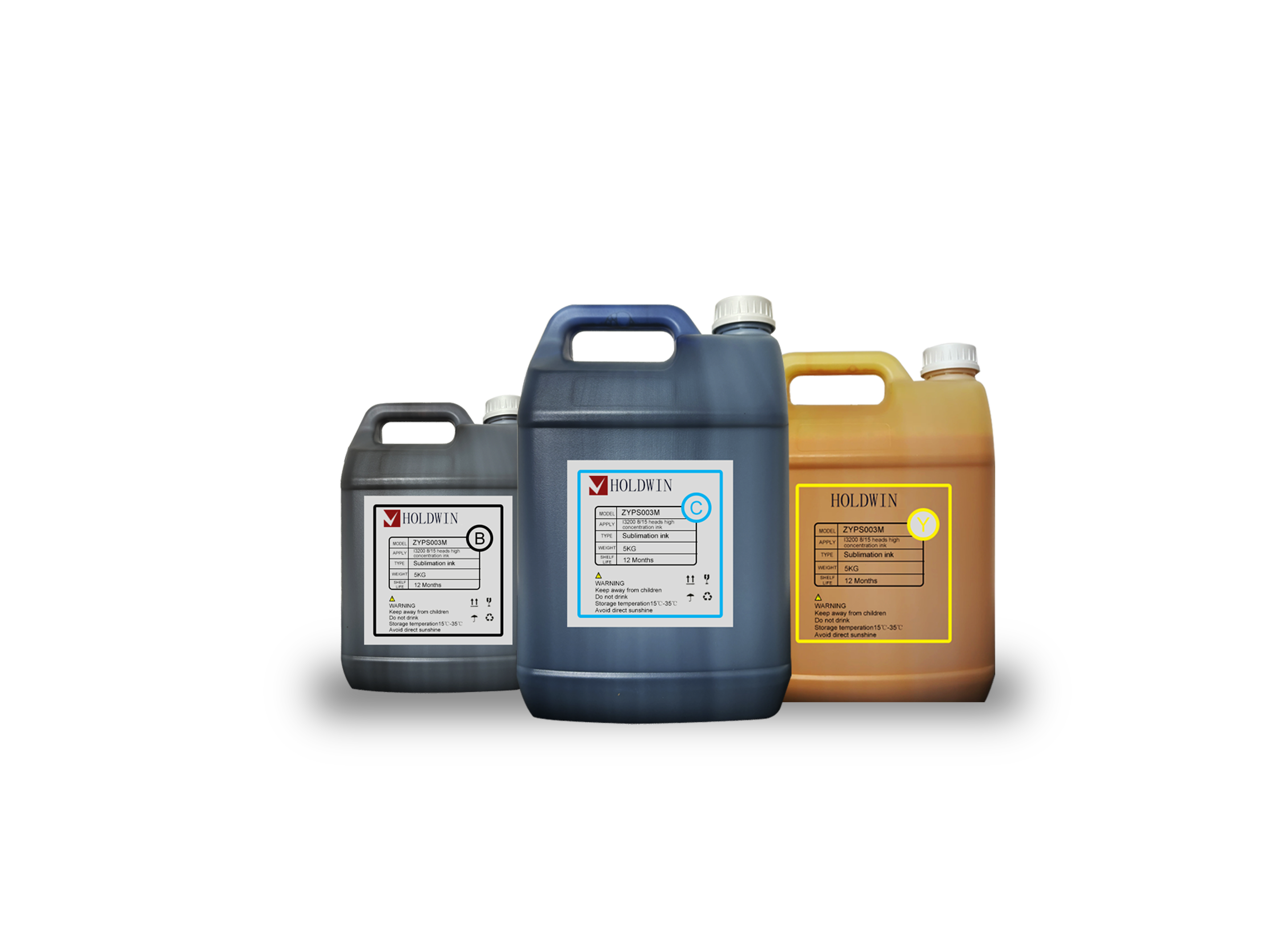
In the world of textile printing, ink technology is at the forefront of revolutionizing how fabrics are decorated and customized. With the rise of digital printing, manufacturers and designers are now able to produce highly detailed and vibrant designs more efficiently than ever before. As this technology continues to evolve, the inks used in digital textile printing are also undergoing significant changes. This article explores the latest trends in ink technology, the challenges faced by the industry, and how companies like HOLDWIN are leading the way in providing innovative solutions for textile manufacturers, fashion designers, and printing enthusiasts.
Digital textile printing has significantly transformed the fabric decoration industry over the past few years. Unlike traditional methods such as screen printing, digital printing allows for on-demand production, reduced waste, and the ability to print complex, high-resolution designs. This technology is used across a variety of applications, including clothing, home textiles, promotional items, and more.
A key factor driving the success of digital textile printing is the development of specialized inks that are compatible with different printing technologies such as sublimation, DTF (direct-to-film), heat transfer, and UV printing. These inks are designed to provide high color accuracy, durability, and flexibility, enabling the printing of complex patterns and designs on a wide range of textile materials.
Several types of inks are used in digital textile printing, each with its own set of advantages and applications. Understanding the properties and benefits of these inks is essential for manufacturers and designers looking to optimize their printing processes.
Sublimation ink is primarily used in dye-sublimation printing, which is ideal for polyester-based fabrics. When heated, sublimation ink transitions from a solid to a gas without becoming a liquid, allowing it to bond with the fabric fibers on a molecular level. This results in vibrant, long-lasting prints that are resistant to fading and cracking. The downside is that sublimation printing is limited to polyester and similar synthetic fabrics.
DTF ink is used in the direct-to-film printing method, which involves printing designs onto a transfer film, which is then applied to fabric using heat. This method allows for printing on a wider range of fabrics, including cotton, polyester, and blends, making it more versatile than sublimation. DTF inks are known for their high color accuracy and vibrant prints.
UV inks are used in UV printing, which is often applied to a variety of substrates, including textiles, leather, and synthetic fabrics. UV inks cure quickly under ultraviolet light, creating durable, waterproof, and scratch-resistant prints. This makes UV printing ideal for applications where the print needs to withstand harsh conditions.
Water-based inks are commonly used in fabric printing and are known for being environmentally friendly. These inks are free from harmful solvents, making them safer for both the operator and the environment. Water-based inks can be used in a wide variety of fabric types and provide vibrant, soft prints with excellent wash fastness.
Solvent inks are typically used for printing on non-porous materials, such as vinyl and plastic, but can also be used for certain textiles, especially for outdoor applications like banners and signage. These inks provide excellent durability and resistance to fading, though they do have a stronger odor compared to water-based inks.

As the digital textile printing industry continues to innovate, several key trends are emerging in ink technology. These trends are reshaping the way fabrics are printed and opening up new possibilities for designers and manufacturers.
With increasing environmental concerns, the textile printing industry is moving toward more sustainable and eco-friendly ink solutions. Water-based inks, which are free from harmful solvents and chemicals, are becoming more popular. Additionally, there is a growing demand for inks that are biodegradable and non-toxic, aligning with the global trend toward sustainability.
As the demand for personalized and customized products continues to rise, the ink technology used in digital textile printing is becoming more adaptable. Manufacturers are developing inks that can be customized to meet specific customer needs, whether it’s a unique color, texture, or finish. This trend is driving the demand for personalized solutions and pushing the boundaries of what is possible with digital printing.
Artificial intelligence and automation are becoming integral parts of the digital printing process. AI can optimize color management, ink distribution, and print quality, ensuring consistency and precision in every print. Inks are being formulated to work seamlessly with these automated systems, making the printing process faster and more efficient.
.jpg)
While the advancements in ink technology have been impressive, there are still several challenges that manufacturers must overcome to ensure the continued success of digital textile printing.
One of the most significant challenges in digital textile printing is ensuring ink compatibility with different types of fabric and printing technologies. Different ink formulations are required for various textile materials, and ensuring that the ink adheres to the fabric and produces high-quality prints can be a complex process.
Specialty inks, such as those used for UV or DTF printing, can be more expensive than traditional inks. For small and medium-sized textile manufacturers, the cost of these specialty inks can be a barrier to entry. Additionally, the availability of these inks may be limited in certain regions, making it difficult for manufacturers to access the materials they need.
Another challenge faced by textile printers is ensuring the long-term durability and washability of prints. Inks must be able to withstand repeated washes and exposure to sunlight without fading or deteriorating. While significant progress has been made in this area, there is still room for improvement in creating inks that offer superior wash fastness and longevity.

At HOLDWIN, we are committed to staying at the forefront of ink technology in digital textile printing. Our team of experts is dedicated to developing innovative ink solutions that meet the unique needs of our customers. We offer a wide range of digital printing machines and ink technologies, from sublimation to DTF and UV printing, ensuring that textile manufacturers, fashion designers, and other industry professionals have access to the best tools for their printing needs.
HOLDWIN’s ability to quickly develop new products and provide personalized solutions ensures that our customers can stay competitive in the rapidly evolving textile printing industry. We are proud to offer not only advanced printing technology but also exceptional customer service and technical support to help businesses succeed.
Customer Testimonial:
“Working with HOLDWIN has been a game-changer for our business. Their ink technology, particularly in DTF printing, has allowed us to offer high-quality, custom designs that our clients love. The support we’ve received has been exceptional, and the ink durability has exceeded our expectations. HOLDWIN truly understands the needs of textile manufacturers and delivers products that make a real difference.”
Ink technology in digital textile printing continues to evolve, offering exciting new possibilities for manufacturers and designers. From sustainable and eco-friendly inks to advanced customization options, the future of digital textile printing looks brighter than ever. However, challenges such as ink compatibility, cost, and print durability still remain, and the industry must continue to innovate to address these obstacles.
At HOLDWIN, we are dedicated to leading the way in ink technology and providing our customers with the tools they need to stay ahead in this competitive industry. As digital printing continues to grow, we remain committed to delivering high-quality, personalized solutions that help businesses thrive.
References
Smith, J. (2021). Trends in Digital Textile Printing: Inks and Techniques. Journal of Textile Science, 45(2), 123-136.
Lee, A. (2023). Sustainability in Textile Printing: The Role of Eco-Friendly Inks. Environmental Printing Journal, 32(4), 211-220.
Wang, H., & Zhang, Q. (2022). Advances in DTF Printing Technology and Ink Formulation. Textile Printing Review, 29(1), 77-85.

Zhiyu is passionate about good products, good services, and good prices to let consumers know that choosing us is the right choice! For partners and end customers, we will provide one-on-one considerate smart services and provide you with more high-quality procurement solutions.